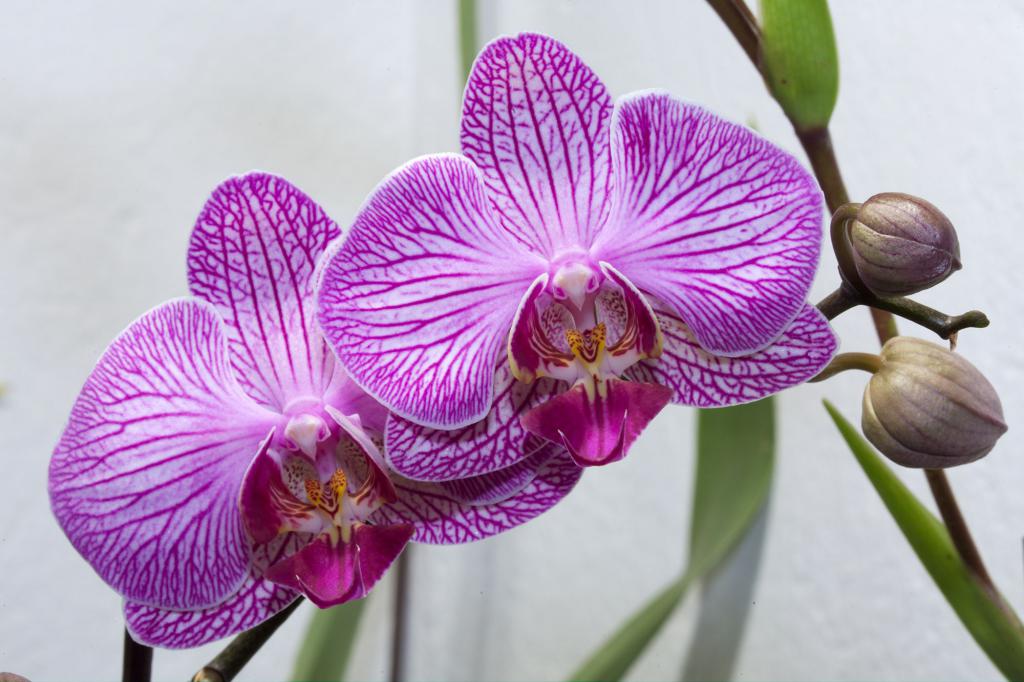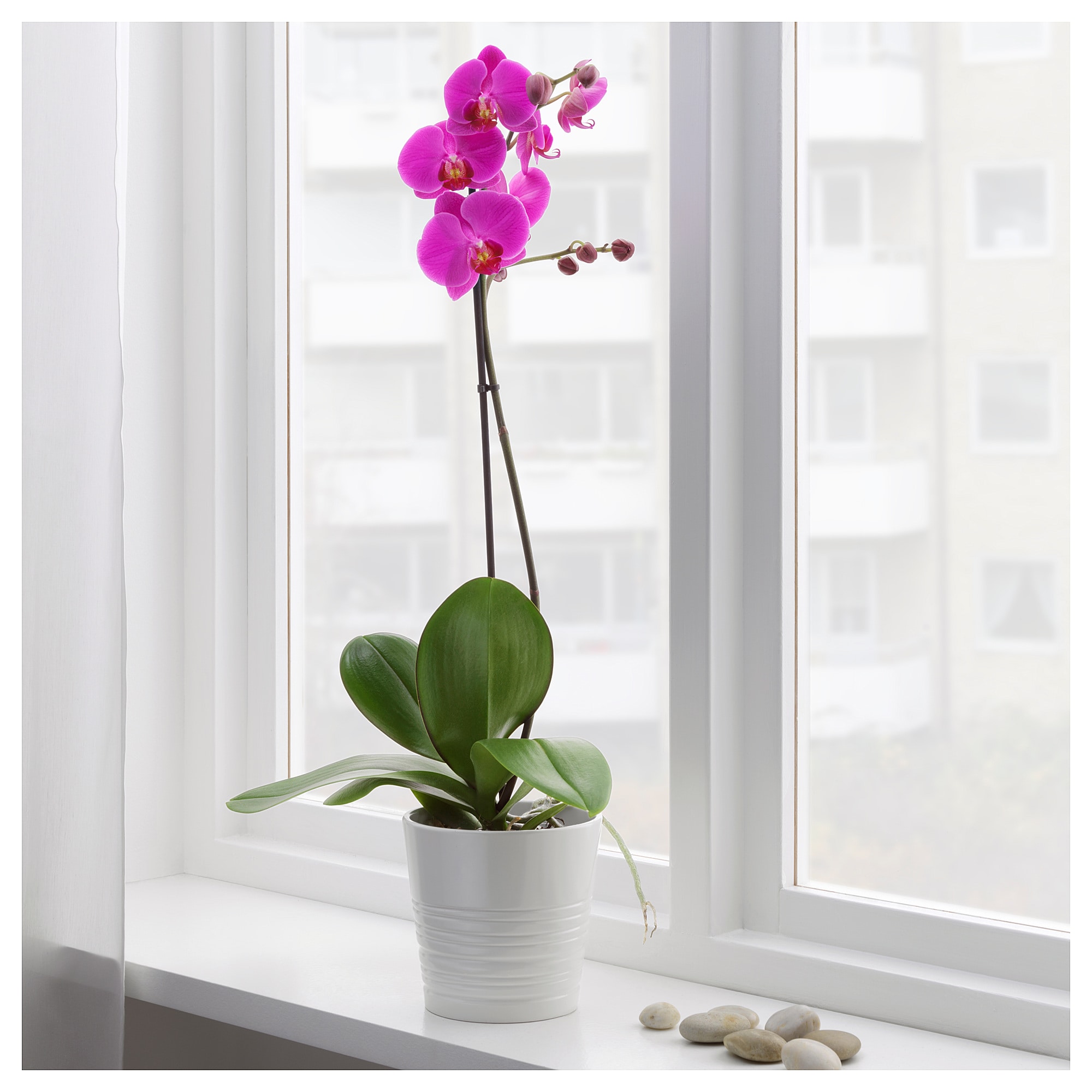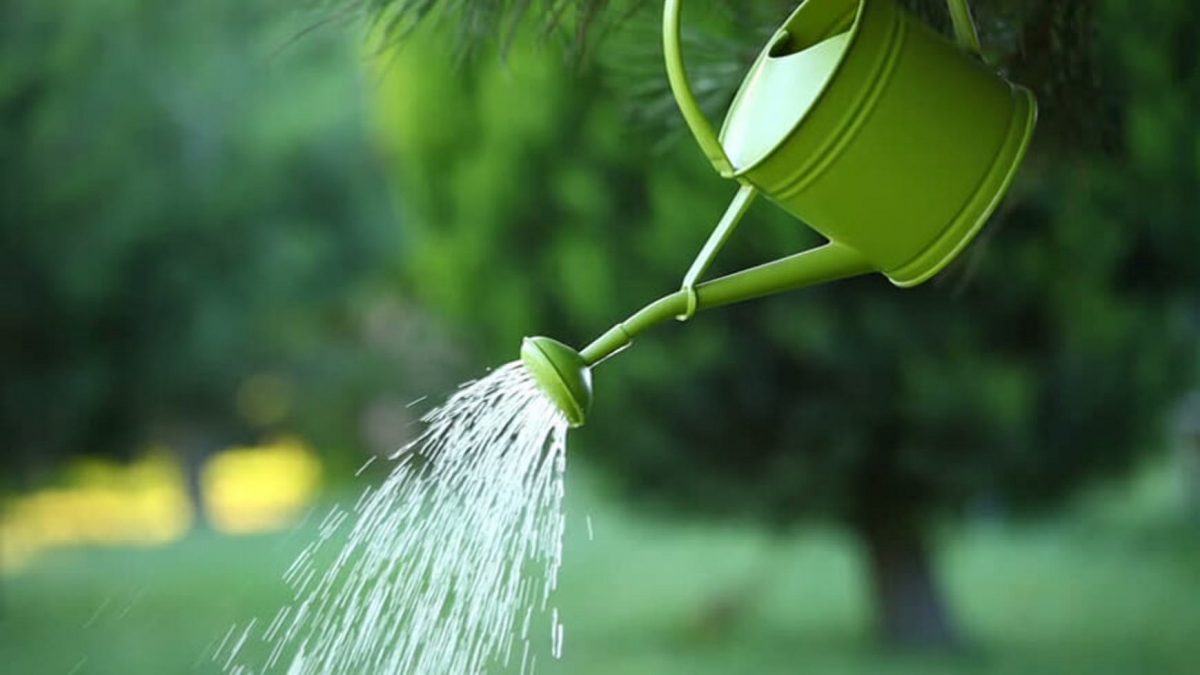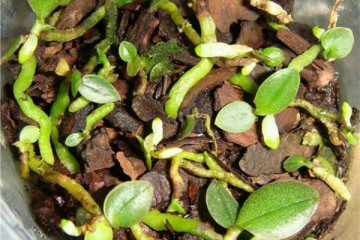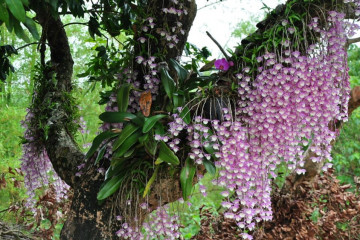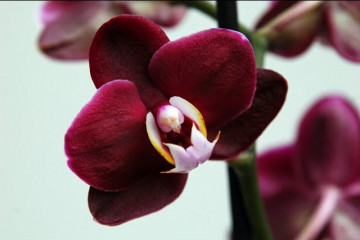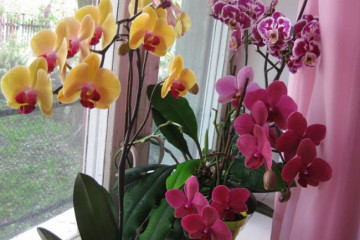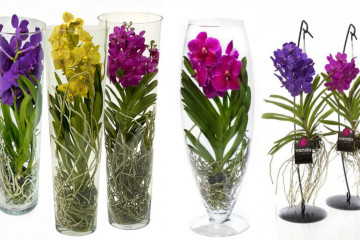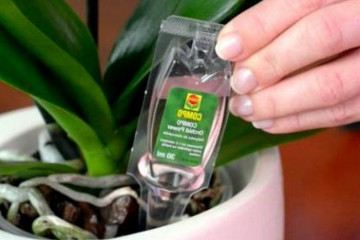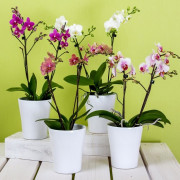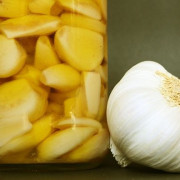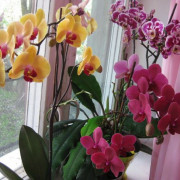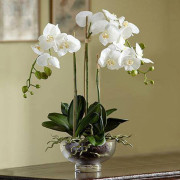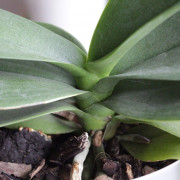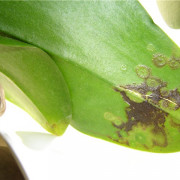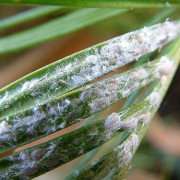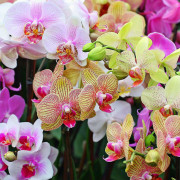How to water an orchid: in a pot and at home
Content:
The orchid is demanding on soil moisture. Before and during flowering, you need to know how to water the plant. The health and external condition of the flower depends on this. During this period, damage to the roots should not be allowed.
Orchid watering frequency factors
This criterion is determined by such factors:
- season;
- life cycle;
- air temperature and relative humidity;
- lighting;
- soil composition;
- growing method.
Spray seedlings planted in a hanging system more often - 1-3 times every 12 hours. And the flowers on the block are irrigated more regularly than the specimens in pots. But the rate of absorption and assimilation of water in different varieties is different. Wet soil is suitable for such plants: Phalaenopsis, Cymbidium.
You can determine the need for watering by the following signs:
- if there is condensation on the walls, there is no need to add water. On the contrary, dry parts of the plant indicate that it is necessary to moisten the soil;
- a very green color of the roots indicates a large amount of moisture. If the roots are white, it is important to add water;
- if a lot of weight is felt when lifting the pot, there is no need to water the flower. If it is light, then water it.
There is no exact humidification schedule. This watering is suitable for all types of orchids: 1-3 times in 7 days in summer and up to 2 times during a week in winter. In periods of extreme heat, the substrate dries out quickly, so it has to be moistened more often.
Lighting
It is recommended to provide the orchid with light by placing it next to a window at a distance of a maximum of 1 meter. It is important to ensure that the sun's rays do not penetrate the plant.
If the light is not enough, then the remaining "buds" will not open, and the leaves will grow too quickly, which will lead to their drying out.
Temperature
The orchid is native to the tropics, but does not like heat. At high temperatures, it will begin to bloom, but will quickly shed its buds and become calm. Therefore, a suitable temperature for the plant is 22 ° C.
Tank size
The orchid pot doesn't have to be large. You need to use narrow containers in which you can fit the entire root system. Ideal values for the diameter and height of the pot are optimal. Large container volumes lead to uneven water flow to the roots, which begin to rot. Tall and narrow pots turn over due to lack of proper support.
When choosing a suitable container size, it is important to focus on a pot in which the flower will be a little crowded.
Watering options
Watering orchids at home is usually done like this:
- you need to put a pot with a plant in a basin;
- take a vessel with liquid and water the plant abundantly, while letting it stand in the water for about 15 minutes;
- the plant should be in water at least 3/4 of the height of the vessel, and it is good if the liquid reaches the shoulders of the pot - this is 1 cm to the border;
- Moisten the bark over the entire height of the water level in the pot and moisten it as completely as possible. This is enough for a week.
Watering raises many questions: what water is better to water an orchid, when and how much?
During flowering
Provide a watering schedule that maintains natural conditions. When an orchid blooms, seeds appear. They are small and volatile. When growing a plant at home, you need to pour water on the roots, but you do not need to fill them before a puddle appears.
If it can be seen that there is no condensation on the inner walls of the pot, and the roots of the orchid have become silvery, then this means that it is time to water.
Watering the orchid. The duration of the process varies: flowers with well-developed roots require transplanting in 2-liter pots. It takes longer to water them than small ones in 0.3 liter pots.
Summer and winter
You can use water with a temperature of about 24 degrees in summer, and in winter - warmer, some of which should drain after watering. You should put the plant in a pots and pour out the remnants so that there is no waterlogging, decay of the roots.
Watering of orchids in summer and winter is different. In winter, with poor light, the physiology of plants changes, so the intervals of moisture need to be increased.
Specialist recommendations:
- it is important to ensure that there is no moisture in the central part of the plant, so you need to remove it with paper or bend the plant and let the water roll off the leaf;
- in spring, with an increase in daylight hours, flower growth is activated, then increase the frequency of watering. But if it is insufficient, then some parts of the plant, the leaves shrink. It is important to prevent this from happening. The degree of drying depends on the structure of the plant, the size of the pot and the decomposition of the substrate;
- in summer, it is recommended to moisten the plant 2 times a week, and in winter only once every ten days (these are normative recommendations, but there is no exact schedule, because the need for watering in any case is determined individually, depends on the humidity of the relative air and on the type of flower).
Watering methods
The easiest method is with a watering can. Pour soft water on the surface along the border of the pot. Filter it in advance until there is no water left at the bottom. The orchid will absorb the remaining liquid.
Recommendations for lovers of phalaenopsis from the komnatnie service: it is important to familiarize yourself with the peculiarities of caring for the type of plant that you want to grow. If multiple orchids are growing, it is best to water them one at a time. This eliminates the transfer of microorganisms from one plant to another. It is necessary to take into account changes in the growth of phalaenopsis in order to understand how to provide them with a regime for normal flowering and growth.
It should be borne in mind that the root system of these flowers is not located in the ground, but in a nutrient medium consisting of parts of the bark, so the water pours over the substrate and flows down. Before watering the flower, the roots may not have time to absorb the liquid evenly and be nourished.
Through the pallet
It is important to choose the appropriate size for this container and arrange flowers in it. Watering should be done from a watering can along the border of the pot or directly into the pan. Pour in a suitable fertilizer concentration beforehand.
Hot shower
Take turns bringing the plants into the bathroom and pouring over them with a shower stream. This method is useful for orchids.It simulates tropical rainfall and removes dust from leaves by opening the mouths and pores. After 5 days, the phalaenopsis may dry out, so you need to water it again.
It is important to let the flowers settle so that they get more moisture in the bathroom, then put them back in place. After the performed procedure, no water should remain in the parts of the plant. The hot shower method in the warm season is recommended to be carried out 1 time in 30 days.
Immersion method
You can water this method about once every 7 days. To do this, pour settled water with a temperature of 24 ° C into a container, then immerse the flower pot so that the water does not come into contact with the plant's neck, and leave in this state until saturation.
Allow excess liquid to drain after watering. You can return the orchid to its location. Do the same with another batch of flowers. Convenient to use for moistening pots. You need to pick up transparent products larger than a pot. You can water the orchid by dipping directly in this planter, and then simply drain the residual liquid.
Watering at home in individual pots
This method of watering Phalaenopsis is safe if there are many plants. Pour a little water on the bottom of the planter (its height is not higher than 2 cm) and release the flowerpot. The flower will take as much liquid as needed, and the excess moisture remaining at the bottom should not harm the roots and the plant itself.
Watering orchids in individual pots is safer because inside the pallets or in a basin, through the water, diseases do not spread to other flowers, and all plants have their own pots.
In a closed system
If the flower is located in a closed vessel without additional holes, then moisten it in this way: pour water to the top of the plant and drain after half an hour. The container will contain enough liquid to absorb.
Greenhouse at home
This is a transparent polycarbonate box. It will transmit light well, be cut into pieces. Unlike glass, it is lighter and warmer.
A greenhouse made of this material matches the design of the apartment, if you choose the right size.
Smart choice of irrigation method
There are various factors to consider when choosing the right method.
- the substrate in which the flower grows and its composition;
- type of plant;
- the container in which the flower lives;
- humidity in the room;
- hardness of the liquid.
Consider common mistakes gardeners make, such as watering too often. You do not need to do this, because the roots will not have time to dry, but they will rot from excess water.
Hydrogen peroxide spray
Peroxide concentration of 3% can be used. To increase the useful consumption of the drug, use microsprays in 50 ml vials with a spray. This device will give a small jet.
The procedure should be carried out in non-sunny weather or in the morning or in the evening, so that no burns appear.The air temperature should be within 22 degrees. In the process of processing, it is important to try so that the drops do not run down the stem, to avoid falling on the flowers. After spraying, inspect the plant for water in the leaf axils and core. Remove excess liquid with a paper towel.
The most important thing to know in order to successfully grow orchids is that their roots are different from the roots of, for example, a cactus, and therefore require a completely different approach to watering.
succinic acid
This is a top dressing used only to help or restore the plant in such cases:
- lack of flower growth;
- phalaenopsis processing;
- the presence of signs of oppression (peduncles or a sluggish plant do not appear);
- resuscitation of dying flowers.

